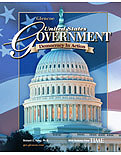
U. S. Government: Democracy In ActionChapter 20: Taxing and SpendingChapter OverviewsThe services provided by the government cost money. Chapter 20 focuses on how government fundraising and government spending affect prices, jobs, and your economic decisions. Section 1 explains how government raises money. The federal government's single biggest source of revenue is individual income taxes. Other sources of government revenue include social insurance taxes, excise taxes, customs duties, estate taxes, gift taxes, and borrowing with government bonds and securities. Section 2 lists the steps that go into preparing the federal budget. Work on the federal budget begins a full 19 months before the fiscal year begins. Some political scientists use the term incrementalism to explain the budget-making process. This means that the best forecast of this year's budget is last year's budget, plus a little more. However, a president's policies go a long way in shaping the details of a budget. Section 3 describes how the government manages the economy. Government fiscal policy influences the economy by using government spending to encourage or discourage citizens' economic decisions. Government monetary policy influences the economy by controlling the supply of money and credit. |  |















